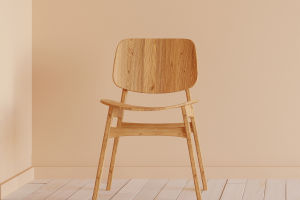Welcome Lykkers! The grass broom, known in Thai as “ไม้กวาดดอกหญ้า”, is a quintessential example of Thai ingenuity and resourcefulness.
Crafted from natural materials readily available in rural Thailand, this traditional cleaning tool embodies the harmony between human creativity and the environment.
Origins of the Grass Broom
The grass broom is made from Thysanolaena latifolia, commonly referred to as broom grass or tiger grass, which grows abundantly in rural areas of Thailand. This grass, with its long, durable, and flexible fibers, is ideal for sweeping surfaces. Historically, Thai people observed the properties of this grass and adapted it for household use, transforming a simple natural resource into an indispensable tool.
The creation of grass brooms began as a household craft and later evolved into a cottage industry. Families in rural communities often produce brooms during the harvest season, both for their own use and to sell in local markets. This tradition has become a vital part of Thailand’s cultural heritage and rural economy.
The Crafting Process
The process of making a grass broom involves several meticulous steps, each requiring skill and patience:
1. Harvesting the Grass
Broom grass is typically harvested during the dry season when it is fully mature. The grass is then dried under the sun to ensure its fibers are firm and resistant to decay.
2. Sorting and Preparing the Grass:
Once dried, the grass is sorted based on length and quality. The finest strands are selected for the broom head, ensuring evenness and durability.
3. Binding the Grass:
The sorted grass is bundled tightly using natural fibers, twine, or wire to form the broom head. This step requires precision to ensure that the grass stays in place during use.
4. Attaching the Handle:
A sturdy wooden handle, often made from bamboo or other lightweight wood, is attached to the broom head. The handle is sanded and smoothed for comfortable use.
5. Trimming and Finishing:
The final step involves trimming the broom to achieve a uniform shape, ensuring it is balanced and aesthetically pleasing.
Unique Features of the Grass Broom
Eco-Friendly:
Made entirely from natural materials, the grass broom is biodegradable and environmentally friendly. It aligns with sustainable living practices, reducing reliance on synthetic cleaning tools.
Lightweight and Durable:
Grass brooms are lightweight, making them easy to handle for extended periods. Despite their simplicity, they are remarkably durable, capable of enduring daily use.
Effective for Various Surfaces:
The soft yet firm bristles make grass brooms ideal for sweeping dust and debris on both smooth and rough surfaces, including wooden floors, tiles, and outdoor areas.
Economic and Cultural Importance
Grass broom production provides a source of income for many rural Thai families. It is a skill passed down through generations, often involving the whole family in the process. This cottage industry not only supports local economies but also helps preserve traditional knowledge and craftsmanship.
The grass broom is also a symbol of Thai culture and values. Its creation reflects the Thai philosophy of using natural resources wisely and living in harmony with the environment. The simplicity and practicality of the broom echo the resourcefulness and adaptability of the Thai people.
The Future of Grass Brooms
Despite the prevalence of modern cleaning tools, grass brooms remain popular in Thailand and beyond. Their eco-friendly nature and cultural significance make them a sustainable choice in a world increasingly focused on reducing environmental impact. Efforts to modernize production and expand markets, both domestically and internationally, have helped preserve this traditional craft.
In conclusion, the grass broom is more than just a cleaning tool—it is a testament to the creativity, resilience, and environmental consciousness of the Thai people. By continuing to value and support traditional crafts like the grass broom, we contribute the wisdom of the past while building a more sustainable future.


